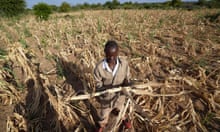The record-breaking heatwaves seen across much of the world in recent months will become increasingly common by the end of the decade, according to research.
Experts say how hot they will be is “hugely” dependent on our ability to curb carbon emissions in the next few years.
“The difference between being very proactive and limiting carbon emissions to keep within those parameters set forward by the Paris agreement, and not doing that, is just hugely consequential for billions of people, primarily throughout the global south,” said Lucas Vargas Zeppetello, a climate researcher at Harvard University and one of the lead authors of the study published in the journal Communications Earth & Environment.
“The difference between the two case scenarios is sort of night and day.”
Zeppetello’s team at Harvard and the University of Washington used historical climate data and combined it with future projections of population growth, economic growth and carbon emissions to develop a probability-based formula estimating what global temperatures could look like in the future.
Specifically, they predicted changes to the global heat index – the combination of air temperature and humidity, which is how the effects of heat are felt on the human body. According to the US National Weather Service, if heat index temperatures reach 39.4C they are deemed “dangerous”, and if they reach 51C they are deemed “extremely dangerous”.
The calculations show that even if countries across the globe keep the global temperature rise to less than 2C above pre-industrial levels – seen by experts as a best-case scenario – the heat index reaches dangerous levels.
By 2100, dangerous conditions will occur in western Europe, the US, China and Japan three to 10 times as often.
Up to half of the days in a year will be deemed “dangerously hot” in most of the tropics and subtropics. In the tropics, the “extremely dangerous” heat index threshold will probably be exceeded on more than 15 days each year.
“There’s still going to be unprecedented heat stress and extreme heatwaves are going to become much more frequent, and we need to be very clear about that,” Zeppetello said.
after newsletter promotion
“For the billions of people who are going to be living in the global south at the end of the century, it’s hard to find words, because it’s unprecedented … the levels of heat exposure that are going to become more regular in the coming decades,” Zeppetello said. “We don’t know what happens when populations are exposed to those levels of heat index with that level of regularity.”
According to Luke Parsons, a climate researcher at Duke University in the US who was not involved in the study, these results might even be conservative.
The heat index is usually calculated using air temperature measurements from weather stations with a thermometer in the shade. If we consider sun exposure at midday in the summer, those numbers can be several degrees higher, Parsons said.
Parsons added that the heat index does a good job of capturing what is dangerous heat stress exposure for someone carrying out day-to-day activities, but people who work outdoors, such as farmers, will likely be unable to maintain a safe body temperature, even at lower heat index thresholds.









